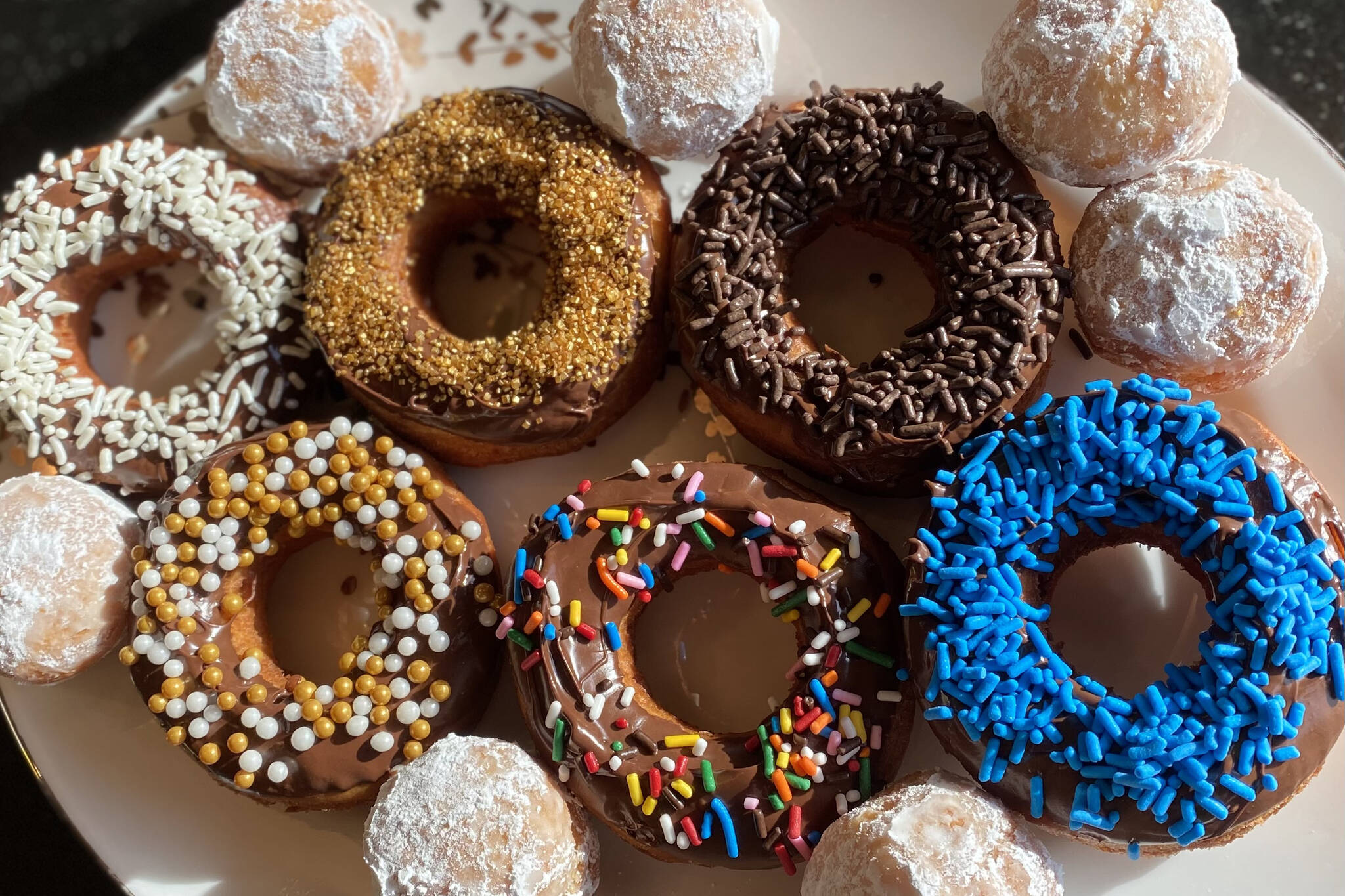My family moved to Anchorage late in the summer of 1991, when I was 4.
My mother quickly found a job at a bakery near Huffman, working graveyards, trading time at work off and on with my dad to make ends meet while they scratched out our new life in a strange land.
She was an artist of many talents, mostly a painter, but she was also a skilled cake decorator. Her last task of the night was to fry and frost the doughnuts, the ghosts of which would follow her home and float up the stairs to gently wake me with whispers of sugar and yeast. Once in a while, if we were very lucky, she would bring some home with her, and we would all sit and have a treat together before my dad left for the day.
My recipe is for old-fashioned doughnuts, and since I make these maybe twice a year, I don’t skimp on the sugar and fat.
Ingredients:
4 cups all-purpose flour, plus some for the counter
1 teaspoon salt
¾ cup whole milk, warmed to about body temperature
3 teaspoons active dry yeast
¼ cup sugar
2 eggs
¾ cup vegetable shortening (you can use the same amount of room-temperature butter if you prefer, but the doughnuts will not be as fluffy)
Vegetable oil for frying
Directions:
In the bowl of your mixer, combine the milk, yeast and sugar and allow to sit for 10 minutes, until bubbly.
With the paddle attachment, mix in your eggs and shortening until smooth. A few lumps are OK.
Combine your flour and salt, swap to a dough hook, and slowly add, about 1 cup at a time, until the mixture forms a ball.
Transfer to a large bowl, lightly greased with oil, and set in a warm spot to rise for 1 hour.
Roll out to about ½-inch thick and cut out your doughnuts. You can use a doughnut cutter if you happen to have one, but for most of us, a mason jar ring and a shot glass works very well. The only rule is to not cut the rings too skinny — no less than 1-inch wide. You can do a second roll to use up scraps, but no more than that or they will be tough.
Let the shaped doughnuts rise, covered with a kitchen towel, for another 45 minutes before frying in vegetable oil for 3-5 minutes, flipping and moving often, until golden brown all over. The holes will take less time. You need to use a lot of oil, at least enough to come halfway up the doughnuts, because they need to float as they cook, or they will scorch.
Toss the doughnuts in powdered sugar while they are still warm or dip in chocolate and cover in sprinkles.
My mom’s favorite was chocolate glazed, served with screaming hot black coffee.
It didn’t occur to me as a preschooler, but she needed that coffee and sugar to entertain her children after a night of hard work in the bakery.
We didn’t know many people up here, so she must not have had much help … and so must not have slept very much at all in that first year before her kids were in school full time. Still, I can’t remember her ever complaining. She greeted us every morning with her sweet smile and melodic voice, the voice (I’m told) I inherited almost exactly.
Tressa Dale is a U.S. Navy veteran and culinary and pastry school graduate from Anchorage. She currently lives in Nikiski with her husband, 1-year-old son and two black cats.

